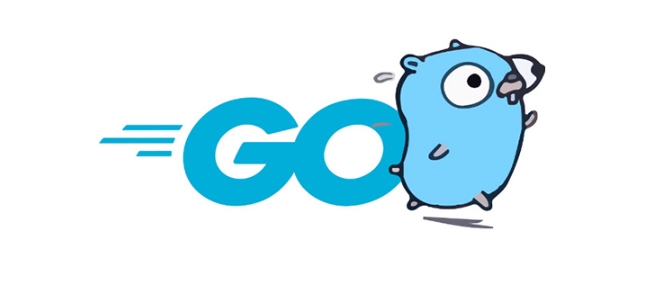Go language time formatting uses a specific reference time Mon Jan 2 15:04:05 MST 2006 to define format strings. Common formats include: 2006-01-02 for year, month and day, 15:04:05 for hours, minute and second, 3:04:05 PM for morning/pm, MST for time zone, and 000 for milliseconds. When writing custom formats, you must strictly follow template rules, such as "2006/01/02 15:04:05". Note: minutes are 04, not mm, cannot be used in YYYY-MM-DD format, PM cannot be replaced with other forms, month must be 01 instead of MM, 12/24 hour system uses 3 or 15 respectively, spaces and punctuation must be exactly matched, and the time zone must be set correctly. For example, after time.Date generates time, call the Format method to output formatted results, such as 2025-04-05 14:30:45 UTC. After mastering the reference time structure, you can use it flexibly.

Time formatting is a very practical but confusing part in Go language, especially when you first come into contact with time.Format . It does not use format strings (such as YYYY-MM-DD ) like other languages, but defines the format through a specific reference time.

This reference time is: Mon Jan 2 15:04:05 MST 2006
In other words, you have to write the format string in the form of this "template" method so that Go can correctly understand what format you want to output.
Common format examples
Here are some commonly used format writing and corresponding results:

- Year, Month, Date:
2006-01-02→ The output is similar to2025-04-05 - Time, minute and second:
15:04:05→ The output is similar to14:30:45 - 12-hour system with morning/pm:
3:04:05 PM→ For example,2:30:45 PM - Time with time zone:
2006-01-02 15:04:05 MST→ For example,2025-04-05 14:30:45 CST - Accurate to milliseconds:
2006-01-02 15:04:05.000→ For example,2025-04-05 14:30:45.123
You can combine these parts as you want, just remember that each number represents a part in the template.
How to write your own format string?
Suppose you want a format like this: 2025/04/05 14:30:45 , you should write the format string like this:

layout := "2006/01/02 15:04:05"
Then use time.Now().Format(layout) to get the result you want.
A few details need to be paid attention to:
- It must be written strictly in the template format, such as the minute is
04, notmm - If you write it as a common format like
YYYY-MM-DD, Go will not recognize it -
PMshould be used in the morning and afternoon, and cannot be written asAMor other forms.
Where to make mistakes
- Month is written as
MM: Many people will subconsciously write asMMto indicate month, but in Go, it must be written as01. - The wrong format for hourly writing :
3or03should be used for 12-hour system, and15should be used for 24-hour system. - Ignore spaces or punctuation : the spaces, colons, and hyphens in the format string must correspond one by one.
- Time zone handling chaos : If you need to display time zone abbreviation (such as CST), remember to make sure the time object has the correct time zone information set.
For example:
t := time.Date(2025, 4, 5, 14, 30, 45, 0, time.UTC)
fmt.Println(t.Format("2006-01-02 15:04:05 MST")) // Output 2025-04-05 14:30:45 UTCBasically that's it. Go's time formatting is a bit tangled at first, but once you remember that reference time, it's much better later.
The above is the detailed content of Go time.Format examples. For more information, please follow other related articles on the PHP Chinese website!

Hot AI Tools

Undress AI Tool
Undress images for free

Undresser.AI Undress
AI-powered app for creating realistic nude photos

AI Clothes Remover
Online AI tool for removing clothes from photos.

Clothoff.io
AI clothes remover

Video Face Swap
Swap faces in any video effortlessly with our completely free AI face swap tool!

Hot Article

Hot Tools

Notepad++7.3.1
Easy-to-use and free code editor

SublimeText3 Chinese version
Chinese version, very easy to use

Zend Studio 13.0.1
Powerful PHP integrated development environment

Dreamweaver CS6
Visual web development tools

SublimeText3 Mac version
God-level code editing software (SublimeText3)
 How does the switch statement work in Go?
Jul 30, 2025 am 05:11 AM
How does the switch statement work in Go?
Jul 30, 2025 am 05:11 AM
Go's switch statement will not be executed throughout the process by default and will automatically exit after matching the first condition. 1. Switch starts with a keyword and can carry one or no value; 2. Case matches from top to bottom in order, only the first match is run; 3. Multiple conditions can be listed by commas to match the same case; 4. There is no need to manually add break, but can be forced through; 5.default is used for unmatched cases, usually placed at the end.
 Using the Context Package in Go for Cancellation and Timeouts
Jul 29, 2025 am 04:08 AM
Using the Context Package in Go for Cancellation and Timeouts
Jul 29, 2025 am 04:08 AM
Usecontexttopropagatecancellationanddeadlinesacrossgoroutines,enablingcooperativecancellationinHTTPservers,backgroundtasks,andchainedcalls.2.Withcontext.WithCancel(),createacancellablecontextandcallcancel()tosignaltermination,alwaysdeferringcancel()t
 Building Performant Go Clients for Third-Party APIs
Jul 30, 2025 am 01:09 AM
Building Performant Go Clients for Third-Party APIs
Jul 30, 2025 am 01:09 AM
Use a dedicated and reasonably configured HTTP client to set timeout and connection pools to improve performance and resource utilization; 2. Implement a retry mechanism with exponential backoff and jitter, only retry for 5xx, network errors and 429 status codes, and comply with Retry-After headers; 3. Use caches for static data such as user information (such as sync.Map or Redis), set reasonable TTL to avoid repeated requests; 4. Use semaphore or rate.Limiter to limit concurrency and request rates to prevent current limit or blocking; 5. Encapsulate the API as an interface to facilitate testing, mocking, and adding logs, tracking and other middleware; 6. Monitor request duration, error rate, status code and retry times through structured logs and indicators, combined with Op
 how to properly copy a slice in go
Jul 30, 2025 am 01:28 AM
how to properly copy a slice in go
Jul 30, 2025 am 01:28 AM
To correctly copy slices in Go, you must create a new underlying array instead of directly assigning values; 1. Use make and copy functions: dst:=make([]T,len(src));copy(dst,src); 2. Use append and nil slices: dst:=append([]T(nil),src...); both methods can realize element-level copying, avoid sharing the underlying array, and ensure that modifications do not affect each other. Direct assignment of dst=src will cause both to refer to the same array and are not real copying.
 How to use template.ParseFS with go embed?
Jul 30, 2025 am 12:35 AM
How to use template.ParseFS with go embed?
Jul 30, 2025 am 12:35 AM
Use the template.ParseFS and embed package to compile HTML templates into binary files. 1. Import the embed package and embed the template file into the embed.FS variable with //go:embedtemplates/.html; 2. Call template.Must(template.ParseFS(templateFS,"templates/.html")))) to parse all matching template files; 3. Render the specified in the HTTP processor through tmpl.ExecuteTemplate(w,"home.html", nil)
 Working with Time and Dates in Go
Jul 30, 2025 am 02:51 AM
Working with Time and Dates in Go
Jul 30, 2025 am 02:51 AM
Go uses time.Time structure to process dates and times, 1. Format and parse the reference time "2006-01-0215:04:05" corresponding to "MonJan215:04:05MST2006", 2. Use time.Date(year, month, day, hour, min, sec, nsec, loc) to create the date and specify the time zone such as time.UTC, 3. Time zone processing uses time.LoadLocation to load the position and use time.ParseInLocation to parse the time with time zone, 4. Time operation uses Add, AddDate and Sub methods to add and subtract and calculate the interval.
 What are runes in Go?
Jul 31, 2025 am 02:15 AM
What are runes in Go?
Jul 31, 2025 am 02:15 AM
AruneinGoisaUnicodecodepointrepresentedasanint32,usedtocorrectlyhandleinternationalcharacters;1.Userunesinsteadofbytestoavoidsplittingmulti-byteUnicodecharacters;2.Loopoverstringswithrangetogetrunes,notbytes;3.Convertastringto[]runetosafelymanipulate
 How to import a local package in Go?
Jul 30, 2025 am 04:47 AM
How to import a local package in Go?
Jul 30, 2025 am 04:47 AM
To import local packages correctly, you need to use the Go module and follow the principle of matching directory structure with import paths. 1. Use gomodinit to initialize the module, such as gomodinitexample.com/myproject; 2. Place the local package in a subdirectory, such as mypkg/utils.go, and the package is declared as packagemypkg; 3. Import it in main.go through the full module path, such as import "example.com/myproject/mypkg"; 4. Avoid relative import, path mismatch or naming conflicts; 5. Use replace directive for packages outside the module. Just make sure the module is initialized






